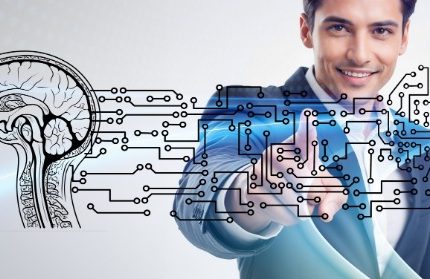Types of Business Technology Equipment
Business technology equipment plays a vital role in ensuring efficient operations and competitive advantage for companies across various industries. These tools and devices range from essential hardware to advanced systems that facilitate communication, automation, and data management. Understanding the different types of business technology equipment is crucial for organizations aiming to optimize their productivity and streamline their daily functions.
Computers and Servers
Business technology equipment includes a variety of devices essential for daily operations, communication, and data management. Among these, computers and servers play a crucial role in ensuring efficient workflow and data security. Computers, ranging from desktops to laptops, provide employees with the tools necessary for tasks such as communication, document creation, and online research. Servers, on the other hand, store and manage large amounts of data, host websites, and support network services, enabling smooth collaboration within an organization. Together, these pieces of equipment form the backbone of modern business infrastructure, supporting productivity and innovation.
Networking Devices
Business technology equipment encompasses a variety of devices and tools essential for the efficient operation of modern enterprises. Networking devices are a critical component of this equipment, facilitating communication and data transfer within and outside the organization. Common networking devices include routers, switches, modems, wireless access points, and firewalls. Routers connect multiple networks and direct data traffic, while switches enable the connection of numerous devices within a single network. Modems convert digital data into signals suitable for transmission over telephone lines or cable systems. Wireless access points extend network connectivity wirelessly, allowing devices to connect without physical cables. Firewalls protect the network from unauthorized access by monitoring and controlling incoming and outgoing traffic. These devices work together to ensure seamless, secure, and efficient communication networks essential for business operations.
Peripheral Devices
Business technology equipment encompasses a wide range of devices and tools used to facilitate operations, communication, and productivity within a company. Peripheral devices are an essential part of this equipment, providing additional functionalities beyond the primary hardware. These devices enhance efficiency and enable seamless interaction with digital systems.
Common types of peripheral devices include printers, which allow for physical copies of digital documents; scanners, used to convert physical documents into digital formats; external hard drives and USB flash drives for data storage and transfer; keyboards and mice that provide input interfaces; monitors for visual display; and speakers and microphones for audio communication. Other peripherals such as webcams facilitate video conferencing, and docking stations expand connectivity options for laptops.
Implementing the right combination of business technology equipment and peripherals is crucial for optimizing workflow, improving communication, and supporting digital transformation efforts within an organization. Staying updated with the latest peripheral devices helps businesses maintain productivity and adapt to evolving technological needs.
Communication Equipment
Business technology equipment includes a wide range of devices designed to enhance operational efficiency, communication, and productivity within a company. Among these, communication equipment plays a crucial role in facilitating seamless information exchange both internally and externally.
- Telephones and VoIP Systems: Essential for everyday communication and customer interaction, these include traditional phones and internet-based voice systems.
- Computers and Laptops: Used by employees for various tasks such as data processing, documentation, and communication.
- Networking Devices: Routers, switches, and modems that establish and maintain network connectivity across the organization.
- Video Conferencing Equipment: Cameras, microphones, and dedicated software that enable remote meetings and collaboration.
- Communication Software: Applications like email clients, instant messaging platforms, and collaborative tools that support real-time communication.
- Wireless Access Points: Provide wireless internet access throughout the office space, supporting mobile devices and flexible working arrangements.
- Fax Machines and Multifunction Devices: Although less common today, these still serve for document transmission in certain industries.
Important Features to Consider
When selecting business technology equipment, it is essential to consider several important features that can impact efficiency and productivity. Factors such as performance capabilities, compatibility with existing systems, durability, and ease of use play a crucial role in making informed decisions. Understanding these key aspects ensures that businesses invest in reliable tools that support their operational needs and foster growth.
Performance and Speed
When selecting business technology equipment, it is crucial to consider key features that enhance productivity and operational efficiency. Durability and compatibility with existing systems ensure long-term usability, while user-friendly interfaces facilitate smooth adoption by employees. Security features are vital to protect sensitive data and maintain compliance with industry standards.
Performance and speed are fundamental aspects of business technology equipment. High-performing devices reduce processing times, allowing tasks to be completed rapidly and efficiently. Fast data transfer rates and quick response times minimize downtime and improve overall workflow. Investing in equipment with optimal performance capabilities ensures that your business remains competitive and agile in a fast-paced market.
Scalability
When selecting business technology equipment, it is vital to consider important features that enhance productivity and ensure long-term functionality. Key features include compatibility with existing systems, ease of use, security capabilities, and durability. Additionally, the equipment should support current and future technological needs to prevent frequent upgrades. Reliability and vendor support are also crucial to minimize downtime and ensure efficient operation.
Scalability is a fundamental aspect to evaluate when investing in business technology equipment. Scalable solutions allow your infrastructure to grow seamlessly as your business expands. This means choosing equipment that can handle increased data loads, user demands, and integration with new technologies in the future. Scalable systems provide flexibility, reduce the need for complete replacements, and optimize long-term investment, enabling your business to adapt swiftly to changing market conditions and technological advancements.
Security Features
When selecting business technology equipment, it is crucial to evaluate both important features and security aspects to ensure efficient and safe operations. These considerations help protect sensitive data and optimize device performance for business needs.
- Performance and Speed: Ensures quick processing and minimal downtime.
- Compatibility: Compatibility with existing systems and software to streamline integration.
- Scalability: Ability to grow with your business demands over time.
- Reliability and Durability: Long-lasting hardware to minimize maintenance costs and disruptions.
- Ease of Use: User-friendly interfaces for staff to maximize productivity.
- Energy Efficiency: Reduces operating costs and promotes sustainability.
Security features are equally vital to protect business data and maintain operational integrity. Reliable security measures mitigate risks associated with cyber threats and unauthorized access.
- Data Encryption: Protects sensitive information during storage and transmission.
- Secure Authentication: Multi-factor authentication and robust password protocols.
- Firewall and Antivirus Protection: Defends against malware, viruses, and intrusion attempts.
- Regular Firmware and Software Updates: Ensures security patches are applied promptly.
- Device Monitoring and Management: Facilitates real-time security oversight and control.
- Physical Security: Locks and access controls to prevent unauthorized physical access.
Energy Efficiency
When selecting business technology equipment, particularly with a focus on energy efficiency, it is essential to consider several key features that can impact operational costs and environmental sustainability.
- Energy Star Certification: Ensures the equipment meets strict energy efficiency guidelines set by regulatory agencies.
- Power Management Features: Includes options like sleep mode, auto-off, and energy-saving settings that reduce power consumption during inactivity.
- Effective Cooling and Ventilation: Proper thermal management minimizes energy used for cooling devices and prevents overheating.
- Hardware Durability: Longer-lasting equipment reduces the need for frequent replacements, lowering waste and resource consumption.
- Compatibility with Energy Monitoring Systems: Facilitates tracking and optimizing energy use across devices and networks.
- Low Power Consumption Components: Using energy-efficient processors, displays, and other hardware reduces overall energy demand.
Integration and Compatibility
In the fast-paced world of business technology, integration and compatibility are essential for seamless operations and efficiency. Ensuring that various devices, software, and systems work together smoothly can enhance productivity and reduce technical issues. As companies adopt new technologies, understanding how these tools fit within their existing infrastructure becomes crucial for achieving long-term success.
Software Compatibility
Integration and compatibility are essential aspects of business technology equipment, ensuring that different systems and devices work seamlessly together to optimize operations. Compatibility refers to the ability of hardware and software to operate without conflicts, while integration involves connecting various systems to function as a unified whole, enhancing efficiency and productivity. When selecting technology equipment, businesses must consider software compatibility to prevent issues such as data incompatibility or system failures. Ensuring that new devices and applications are compatible with existing infrastructure allows for smooth deployment, reduces downtime, and supports future scalability. Overall, focusing on integration and compatibility helps organizations maintain a cohesive technological environment that meets current needs and adapts to evolving business requirements.
Hardware Interoperability
Integration and compatibility are essential aspects of business technology equipment, ensuring that different systems and devices work seamlessly together to improve efficiency and productivity. When hardware components are compatible, they can communicate and function cohesively without extensive modifications or updates, reducing downtime and operational costs. Hardware interoperability further enhances this synergy by allowing various devices from different manufacturers to connect and operate harmoniously within the same network or system environment. Achieving high levels of integration and compatibility in business technology equipment is crucial for creating a streamlined, flexible, and scalable infrastructure that can adapt to evolving business needs and technological advancements.
Emerging Technologies in Business Equipment
Emerging technologies in business equipment are revolutionizing the way companies operate and stay competitive in today’s dynamic marketplace. From advanced automation tools to smart devices, these innovations enhance efficiency, streamline processes, and foster innovation. Staying updated with the latest technological advancements is essential for businesses looking to optimize their resources and achieve sustainable growth.
Cloud Computing Devices
Emerging technologies in business equipment are transforming the way companies operate, enhancing efficiency and flexibility. Cloud computing devices have become a cornerstone of these advancements, enabling seamless data access and collaboration from any location. These devices, including cloud servers, thin clients, and mobile endpoints, facilitate real-time communication and data sharing, reducing the need for extensive physical infrastructure. As businesses increasingly adopt cloud solutions, they benefit from scalable storage options, cost savings, and improved security features. Emerging innovations such as edge computing devices and Internet of Things (IoT) peripherals further augment the capabilities of business equipment, offering more intelligent, connected, and responsive systems for modern enterprises.
IoT Devices
Emerging technologies in business equipment and IoT devices are revolutionizing the way companies operate, enhancing efficiency, security, and connectivity. Advanced IoT devices enable real-time data collection and analysis, allowing businesses to optimize workflows and predictive maintenance. Smart office equipment, such as connected printers and HVAC systems, streamline operations and reduce energy consumption. Additionally, integration of cloud-based solutions with IoT devices offers seamless remote management and automation, empowering organizations to innovate and stay competitive in dynamic markets. As these technologies continue to evolve, they promise to transform traditional business environments into more intelligent, responsive, and sustainable ecosystems.
AI-Powered Equipment
Emerging technologies in business equipment are transforming the way companies operate, enhancing efficiency, productivity, and innovation. AI-powered equipment, in particular, is at the forefront of this revolution, offering intelligent solutions that adapt to various business needs and optimize workflows.
- AI-driven automation tools streamline routine tasks, reducing manual effort and minimizing errors.
- Smart printers and copiers equipped with AI can analyze usage patterns and perform predictive maintenance, reducing downtime.
- Intelligent conferencing systems utilize AI to improve audio and video quality, making remote communication more effective.
- AI-powered inventory management hardware can forecast demand and suggest optimal stock levels.
- Business equipment with embedded AI analytics provide real-time data insights to aid decision-making.
Virtual Reality Tools
Emerging technologies in business equipment are revolutionizing the way companies operate and engage with their clients. Virtual Reality (VR) tools, in particular, are transforming various sectors by offering immersive experiences that enhance training, product demonstrations, and remote collaboration. Businesses are leveraging VR to create realistic simulations, allowing employees to develop skills in a safe, controlled environment while also providing customers with engaging ways to explore products and services. As VR technology continues to advance, it is becoming more accessible and cost-effective, making it an essential component of modern business strategies. These innovations not only improve efficiency and customer engagement but also open new avenues for innovation and competitive advantage in an increasingly digital marketplace.
Maintenance and Support
Effective maintenance and support are essential components of managing business technology equipment. They ensure that systems run smoothly, minimize downtime, and extend the lifespan of hardware and software assets. By providing timely assistance and regular upkeep, businesses can enhance productivity, prevent costly disruptions, and stay competitive in a rapidly evolving digital landscape.
Regular Updates and Upgrades
Effective maintenance and support are essential components in ensuring the longevity and optimal performance of business technology equipment. Regular upkeep involves routine inspections, timely repairs, and troubleshooting to prevent unexpected failures that could disrupt operations. Providing comprehensive support services helps address user concerns promptly and maintains system reliability.
Regular updates and upgrades are crucial for safeguarding business technology equipment against security vulnerabilities, improving functionalities, and ensuring compatibility with evolving software standards. Keeping software and firmware current not only enhances system performance but also extends the equipment’s lifespan by incorporating the latest technological advancements and features.
Technical Support Services
Maintenance and Support, including Technical Support Services, are essential components of business technology equipment to ensure optimal performance and longevity. These services encompass regular updates, troubleshooting, repair, and assistance to resolve any technical issues promptly. Effective support minimizes downtime, enhances security, and maximizes the value of technology investments. Providers typically offer tiered support levels to meet the specific needs of businesses, ensuring that technical issues are addressed efficiently both remotely and on-site if necessary. Maintaining a proactive approach to support helps businesses stay competitive and maintain seamless operations in today’s fast-paced digital environment.
Preventative Maintenance
Maintenance and support are vital components in managing business technology equipment, ensuring optimal performance and longevity. Preventative maintenance involves regular inspections and tasks designed to prevent equipment failures before they occur, reducing unexpected downtime and repair costs. By scheduling routine checks, updates, and cleaning, businesses can identify potential issues early and maintain the efficiency of their technological assets. Effective preventative maintenance also extends the lifespan of equipment, improves security, and enhances overall operational productivity, making it an essential practice for any organization relying on technology infrastructure.
Cost Considerations
When investing in business technology equipment, understanding cost considerations is essential for making informed decisions. Balancing initial purchases, maintenance, and future upgrades can significantly impact a company’s budget and overall efficiency. By carefully analyzing these financial factors, businesses can optimize their technology investments to support growth and productivity.
Initial Investment
When evaluating business technology equipment, cost considerations are a critical aspect that can influence purchasing decisions and overall budget management. Initial investment costs often determine the feasibility and scope of technological upgrades or expansions within a company.
- Purchase Price: The upfront cost of acquiring hardware, software, or other technology assets.
- Installation and Setup: Expenses related to configuring and integrating new equipment into existing systems.
- Training Costs: Investment in employee training to ensure proper use and maximum efficiency of new technology.
- Maintenance and Support: Ongoing expenses for maintaining equipment, including repairs and technical support services.
- Upgrade and Scalability Costs: Future investments needed to upgrade technology as business needs evolve.
Operational Expenses
When evaluating business technology equipment, it is essential to consider the ongoing operational expenses to ensure sustainability and cost efficiency. These expenses can significantly impact the overall budget and long-term profitability of a business.
- Maintenance and Repairs: Regular servicing and unexpected repairs can incur substantial costs over time.
- Software Licensing and Updates: Many devices require ongoing software licenses and updates, which can add to recurring expenses.
- Energy Consumption: Efficient equipment can reduce electricity bills, but older or less efficient devices may increase operational costs.
- Support and Warranty Services: Extended support and warranty plans can help prevent costly downtime and ensure smooth operations.
- Training and Personnel: Proper training on new technology may be necessary to maximize productivity and avoid costly errors.
Return on Investment (ROI)
When evaluating business technology equipment, cost considerations are essential to ensure that investments align with the company’s financial strategy. Initial purchase price, installation fees, and ongoing maintenance costs should be carefully analyzed to determine the true financial impact. Additionally, energy consumption and potential upgrades can influence long-term expenses, making it vital to select cost-efficient solutions that deliver value over time.
Return on Investment (ROI) is a critical metric for assessing the effectiveness of technology equipment purchases. By measuring the benefits gained—such as increased productivity, improved customer service, or streamlined operations—against the total costs incurred, businesses can make informed decisions. A high ROI indicates that the technology is generating substantial value, justifying the initial expenditure and supporting overall business growth and competitiveness.





